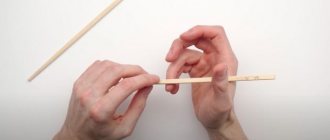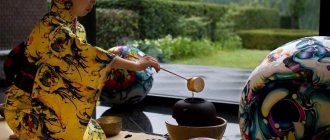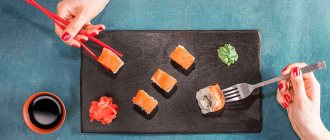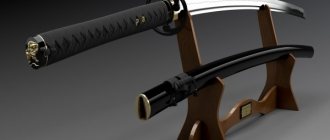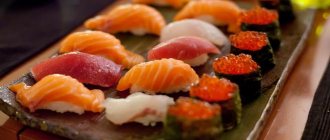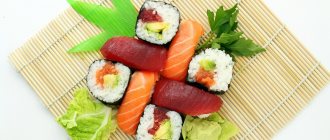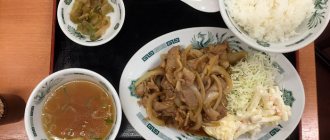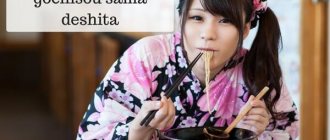Before visiting Japan, China, Korea and other eastern countries, it is important to understand how to hold sushi chopsticks and use them when eating. This will help the tourist not only feel comfortable in a restaurant or on a visit, but also to become familiar with the local culture and learn traditions. Mastering the skill of using unusual cutlery is not difficult - all you need is the right attitude and regular training.
History of origin
Chopsticks (or hashi) were first used more than 4,000 years ago in ancient China. According to legend, they were invented by the eastern emperor Yu the Great. One day he was very hungry, but the water in which he cooked the meat was too hot. Therefore, he used a branch broken into 2 parts, torn from a nearby tree, to get food from the broth - this became the prototype for future traditional chopsticks.
The first reliable historical records of the use of these cutlery date back to the time of the chronicles of Sima Qian.
According to them, Emperor Zhou of the Han Dynasty used ivory chopsticks for meals. In those days, Khasi was used only by the wealthy, particularly members of royal families.
The common people began to use chopsticks in 700-800. ad. They were originally intended for cooking. Long hashi made it convenient to grab pieces of meat and fish wrapped in leaves and turn them over, as well as carry hot stones.
Later, the cutlery became a replacement for the ladle for removing food from hot broths and decoctions.
The history of Chinese chopsticks.
Chopsticks began to become widespread outside of Asian countries only in the 20th-21st centuries, when the popularity of oriental cuisine increased in the world. They were used in various restaurants, cafes, and food delivery. Now the Khasis are well known to residents of Russia, as well as most CIS countries and Europe.
Types of sticks
Chopsticks come in several varieties. They differ in purpose, length and other characteristics. Main types:
- Waribashi are disposable chopsticks fastened at the ends, which are served in most restaurants and cafes with Japanese, Chinese, and Korean dishes. Made from wood, plastic and bamboo, sold in sealed paper packages.
- Nuribashi are reusable devices. Most often they are made of cedar and have pointed ends.
- Standard hashi are universal, made from different materials, most often wood. Among the Japanese, they are considered a personal item on a par with a toothbrush and comb.
- Khasi for cooking vary in length (up to 30 cm), and are used for mixing dishes. Not considered a personal item.
- Gong Fai - designed for transferring food from a common plate to your own. They look like standard hashi ones.
Waribashi sticks are a disposable product without unnecessary sophistication.
In Japan, there are separate types of sticks for sweets, meat and fish dishes, tea ceremonies, and holidays. But the differences between them are insignificant and are more aesthetic than practical.
Selection rules
When choosing Khasi, you should pay attention to the material. Popular options:
- Tree . Sticks made from it are comfortable, light in weight, inexpensive, and come in different shapes and sizes.
- Metal. In the production of hashi, silver is most often used (in ancient times it was used to test food for poisons) and simple alloys: products made from them are more expensive than wood, but are more durable and durable.
- Plastic. It produces practical, cheap chopsticks, which are most often served in cafes and restaurants, but they cannot be used for eating hot dishes.
- Exotic materials - ivory, jade, marble, etc. Khasi ones are expensive, have an elaborate design, and are more often used for interior decoration in kitchens and restaurants than for their intended purpose.
Wooden sticks should be smooth, polished, without splinters or burrs.
Metal hashi are distinguished by their increased thinness and are used mainly by residents of Korea.
In addition to the material, their shape is taken into account when choosing. Beginners should choose cutlery that is square in cross-section: it is easier to pick up slippery food and your hands get less tired. People who are not used to them often get sore fingers and calluses from round hashi, especially with regular use.
Disposable chopsticks are often made from inexpensive plastic.
Sticks with thin ends are convenient. They make it easier to pick up food and bring it to the mouth, since the thicker edge maintains balance, compensating for the weight of the food with its weight.
When choosing reusable hashi, you should also pay attention to aesthetic qualities. Cutlery with painted, carved, and varnished handles will not only help you get acquainted with Asian dishes, but will also become a decoration for your kitchen.
Features of training sticks
The training sticks are fastened to each other at the ends with a movable elastic band or a special fastener made of elastic material. Some of them have a clothespin design. This feature helps to lift food using hashi as tongs or tweezers with which to clamp a piece of food.
Using training devices makes it easier to adapt your hand to them, get used to the correct movements, without fear of dropping food.
How to choose chopsticks (hashi)
At the learning stage, they use training sticks, which have special devices that simplify the process of using them, but you need to stop in time and switch to regular ones. When purchasing chopsticks (hashi), you must:
- choose the optimal length, which is obtained from the distance between the thumb and index finger, set at an angle of 90º, multiplied by one and a half. Chopsticks are changed as the hand grows. Accordingly, the length for men, women and children will be different. There are also other comparative guidelines, for example, for a child, the length of the sticks is selected at the level of the length of the mother’s foot (a strange option) or 15% of the mother’s height - theoretically it is not difficult to calculate.
- Optimal material is essential. Sticks must be safe and therefore they are made from such types of wood as: hinoki (cypress obtuse leaf), bamboo. There are also a large number of cute plastic chopsticks for children, but it is better to use natural material. In addition, it is more difficult to eat with plastic chopsticks, as they are slippery.
Preparing for meals
Breakfast, lunch or dinner in the culture of Asian countries is a whole ritual for which you need to properly prepare.
Before eating, be sure to dry your hands with a warm towel (the waiter will bring it to you in the restaurant) .
Then you should remove the sticks from the packaging and separate them if they are disposable. If the food has not yet been brought by this time, they should be placed on a special ceramic stand or, if there is none, placed with the tips on the edge of the plate.
Before starting the meal, be sure to wish everyone a bon appetit, and after finishing it, thank the hosts.
If a restaurant serves disposable waribashi, they must be thoroughly wiped off each other before use. This will get rid of splinters and burrs on the wood.
Learning to eat with Chinese chopsticks: step-by-step instructions
Learning to hold chopsticks in your hand correctly is quite simple. At the initial stages of training, it is best to do this in stages according to the following scheme:
- Relax your hand. Press the little finger and ring finger tightly against each other and bend slightly, as shown in the photo.
- Place the lower stick in the indentation between the thumb and index finger. It should protrude about a third with its blunt end back.
- Place the narrowed part on the ring finger. Press its base with your thumb so that the cutlery does not move.
- With your index, middle and thumb, take the top stick. Hold it like a pencil when writing.
When eating, the lower stick remains motionless, and the upper one moves, capturing food between the tips. The hand and fingers should be relaxed so that there is no instinctive desire to clench your hand into a fist.
Proper use of sushi chopsticks.
Rules for using hashi for food:
- The sticks should lie parallel to each other. If one of them moves during eating, it is aligned by tapping on the table without using the second hand.
- The distance between the blunt ends of the sticks should be at least 1.5 cm.
- All finger movements must be performed calmly and smoothly. If you have to make an effort to bring the sticks together, it means the person is holding them incorrectly.
- When eating rice and other crumbly foods using hashi, you are allowed to bring the plate to your face. But in the case of sushi, rolls, large pieces of meat and fish, such behavior is unacceptable.
To learn how to use Chinese chopsticks, it is most effective to practice on small objects such as grains and seeds. Having learned to pick them up, a person will not have problems with large pieces of food.
What are they?
Sushi chopsticks are a cutlery common in Asian countries; they are used to eat rice, fish, vegetables and other foods. For the Japanese, this is not just a device for eating, but a sacred symbol of good luck, prosperity, and longevity. Each resident of Asian countries has his own personal device; transferring it to another person is strictly prohibited, this is a bad sign.
Scientific research proves that eating with such a device is beneficial. The process promotes the development of muscles, fine motor skills, and also has a positive effect on a person’s mental development. Thus, children who began to eat with chopsticks from the age of one are significantly ahead in their development of their peers who are accustomed to eating with spoons.
Currently, sushi chopsticks are used in all countries, including the Russian Federation, but not as the main device. Traditionally, they are used in this capacity by residents of East Asia:
- China - appeared during the Shang period, that is, more than 3,000 years ago. About 30% of all Chinese use them.
- Japan is distinguished by its variety and variety of shapes and designs. Used by most Japanese people.
- Korea - made of metal. This is the only state that uses metal devices everywhere.
- Vietnam - produced in unsplitted form, that is, doubled; disposable devices are often served on the table.
- Thailand - used only for eating noodles, introduced into use since the 19th century by decree of King Rama V.
Sushi chopsticks are in most cases associated with Japan, but these devices appeared long before our era in China. Over the centuries, they gradually gained popularity in the rest of Asia.
In Japan the device is called hashi. The manufacturing material is bamboo. Previously, for this purpose, a narrow plant trunk was taken, it was split, then folded across, thereby forming tweezers, also known as roll sticks. Only centuries later they began to make individual sticks from different types of wood. At the present stage, production is being improved, wood is processed using new technologies. Products made of metal and plastic also came into use.
In ancient times, cutlery was a symbol of wealth; it was used only by the nobility. That is why the Khasis were decorated, adorned with stones, jewelry, painted, and varnished. Ordinary workers and poor people had no idea how to properly hold sushi chopsticks, so they ate from bowls with their hands. Now all Japanese can afford this device; they use it and prepare food.
Longer sticks - up to 35 cm - are used for preparing dishes, stirring sauces, and beating products.
For the Japanese, sushi chopsticks are a symbol of good luck.
Using sushi chopsticks helps develop fine motor skills
Chopsticks are used not only in Japan, but also in many other countries
How to eat sushi correctly
In restaurants, hashi is most often used for sushi, rolls, sashimi and other fish delicacies. You need to eat them as follows:
- Grab the portion from both sides so that one chopstick touches the rice and the other touches the fish. Try to pinch food at the center of gravity to make it easier to maintain balance.
- If desired, dip the dish in soy sauce or wasabi, fish side down. Then bring it to your mouth, sitting straight and without bending over.
- Eat a whole piece without putting the leftovers back.
- After finishing a portion of sushi or rolls of one type, eat a little canned ginger. It is used to neutralize tastes so that the sensations from different delicacies do not mix with each other.
If the cutlery moves freely, without excessive pressure, then it is taken correctly.
When eating sushi, it is important to handle it delicately, with minimal pressure. Otherwise, the dish may break or fall apart, which will have a bad effect on its taste and aesthetic qualities.
What is the difference between chopsticks in China, Japan and Korea?
Comparative analysis can be carried out using many indicators. Let's look at some of them:
- According to the material of manufacture:
- Japan - chopsticks are made of wood and plastic.
- China - mainly made of wood, bamboo and ivory.
- Korea - usually made of stainless steel and silver of the highest quality.
- By form:
- Japan - medium-length chopsticks with sharp tips, these chopsticks are easy to eat fish with.
- China - long sticks with rounded tips.
- Korea - medium length, flat, thin, with a cross section.
- By gender:
- Japan - Women's and men's items differ in length. Women's chopsticks are shorter. At the same time, for children, the sticks are replaced as they grow.
- China - there are no differences between men's and women's chopsticks. Children immediately use standard length sticks.
- Korea - no difference. Children use chopsticks just like adults.
- By individualization:
- Japan - in household use, chopsticks are individual.
- China - there are no differences, all family members use it.
- Korea - there are no differences, all family members use it.
- By use:
- Japan - they eat not only solid food, but also liquid food with chopsticks. So, to drink soup, you should bring the bowl to your mouth and drink, using chopsticks to help remove the remaining contents. They eat sashimi, sushi, tempura, noodles, and soup with chopsticks.
- China - rice and soup are eaten with a spoon. Chopsticks are used to eat noodles, fried dumplings, and fried foods.
- Korea - liquid food is eaten with a spoon, just like rice. Kimchi, namuru, fried foods and vegetables are eaten with chopsticks.
Share in the comments how easy it is for you to use chopsticks or do you prefer to eat with a fork, even if it’s sushi and rolls?
Traditions and rules of etiquette
Residents of eastern countries associate the use of hasi at the table with many superstitions and cultural customs. Some of them:
- It is forbidden to knock, wave, or move chopsticks on the table - they are used exclusively for eating food. Pointing at someone with the tips of your hashi is considered as indecent as pointing with your finger.
- Hashi clenched in a fist is a sign of aggression. Plates laid out across or crossed cutlery are perceived similarly.
- It is considered a bad omen to stick chopsticks into food - this is what they do at funerals. For the same reason, food is not transferred from one Khasi to another.
- It is forbidden to feel the food in a common plate with chopsticks, choosing the best portion for yourself. According to etiquette, a person is obliged to take the piece of the dish that his cutlery touched first.
- When not in use, hashi is placed on a plate parallel to the edge of the table with the thin ends to the left. Leaving them on the tablecloth is considered indecent.
- Do not lick the chopsticks or hold them in your mouth for a long time. This is not only impolite, but also violates hygiene rules.
It is important to remember that in the culture of East Asian countries, Khasi is considered not just a cutlery, but also a magical symbol, a connection between man and the earth. Therefore, all the associated traditions and rules of etiquette must be well remembered, otherwise you can easily offend the hosts of the table.
Hashi stand
There is a special stand for chopsticks - hasioki (from “hashi” and “oki” - “to put”). This item is an important element of Japanese food culture. The absence of hasioka on the table may indicate problems with money in the family.
If hasioki is not served in a restaurant, the cutlery can be placed on the table or on a plate. You cannot place them across the plate until the end of the meal. This is considered a sign that the person has finished eating.
